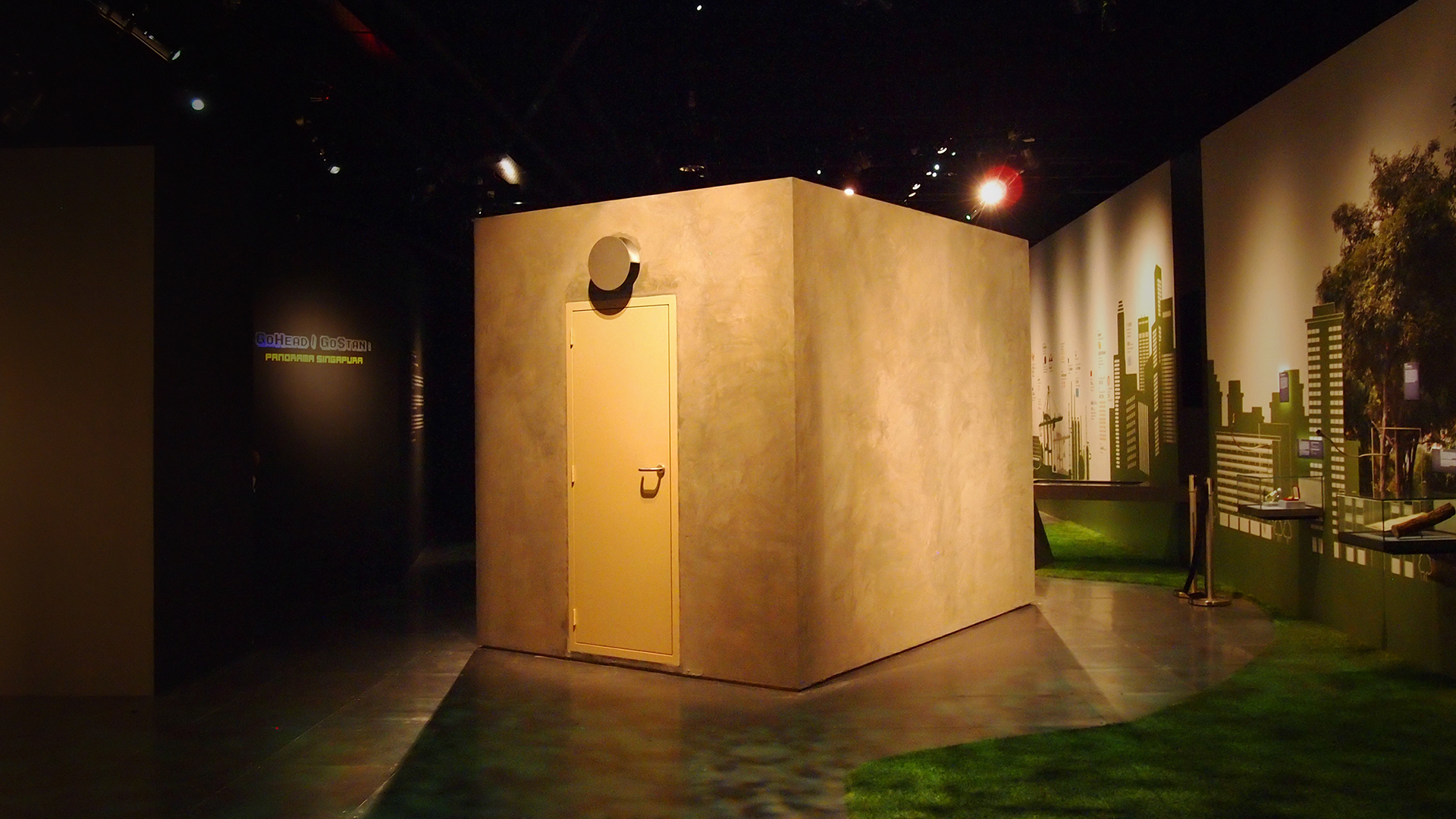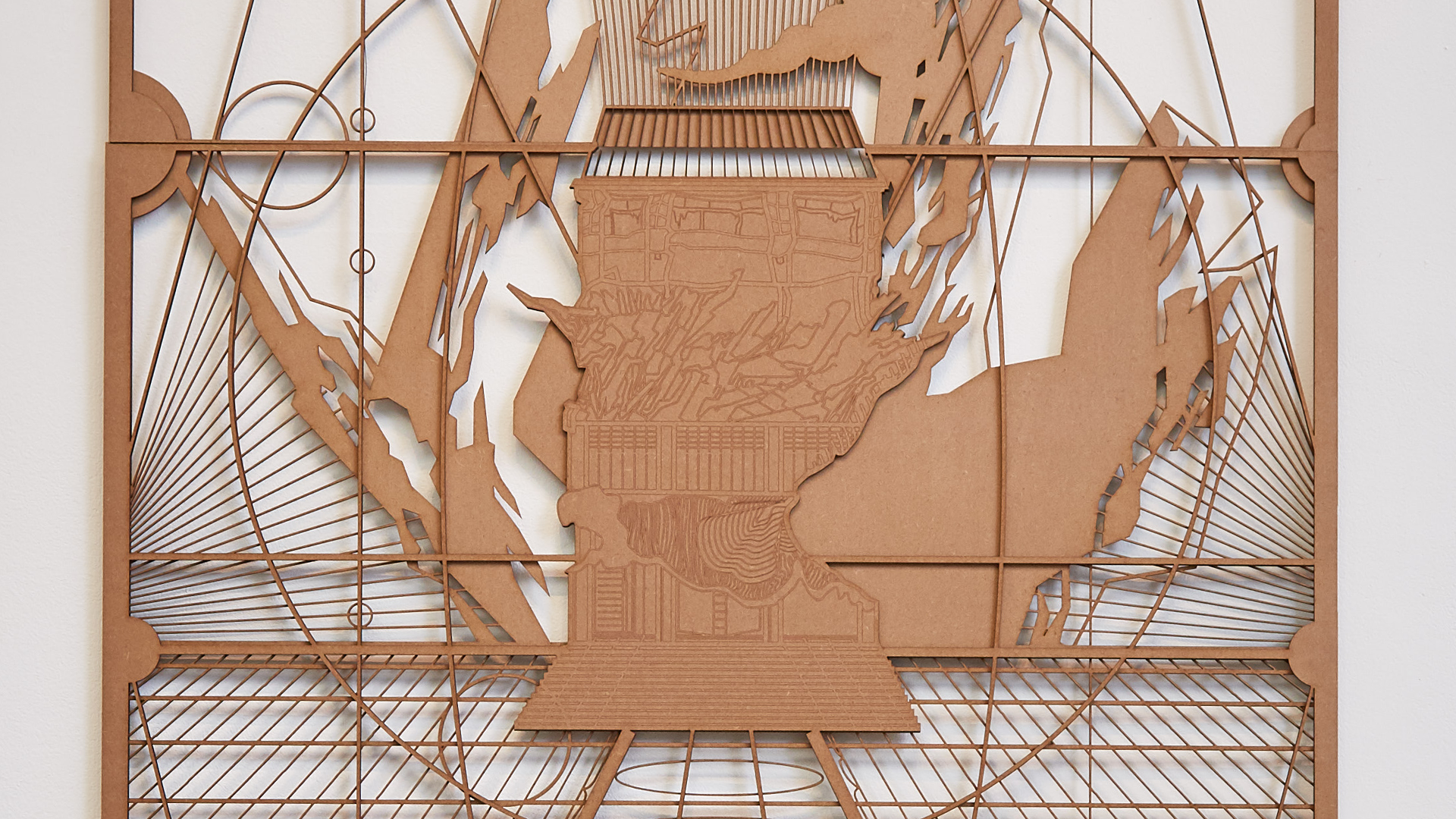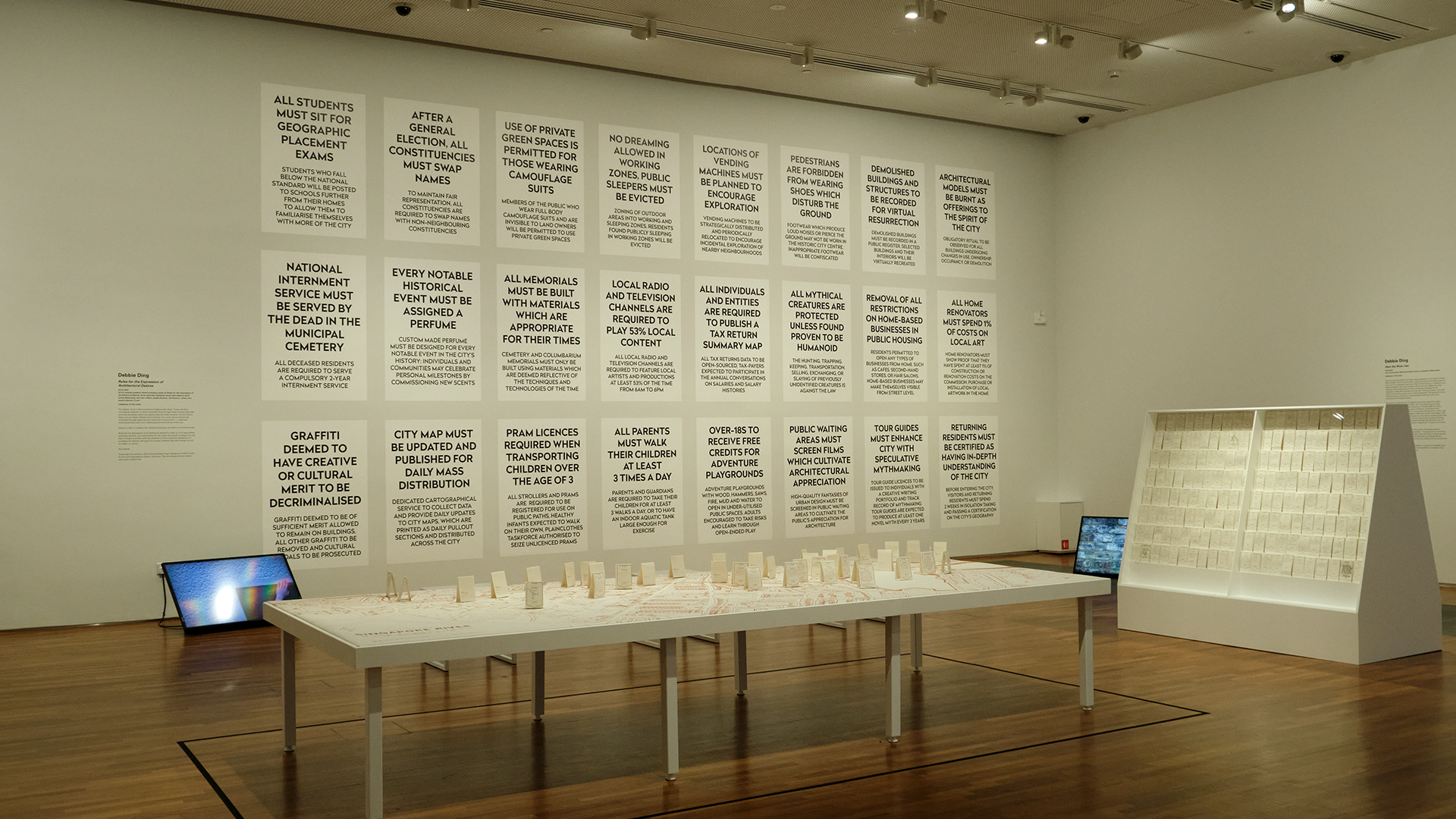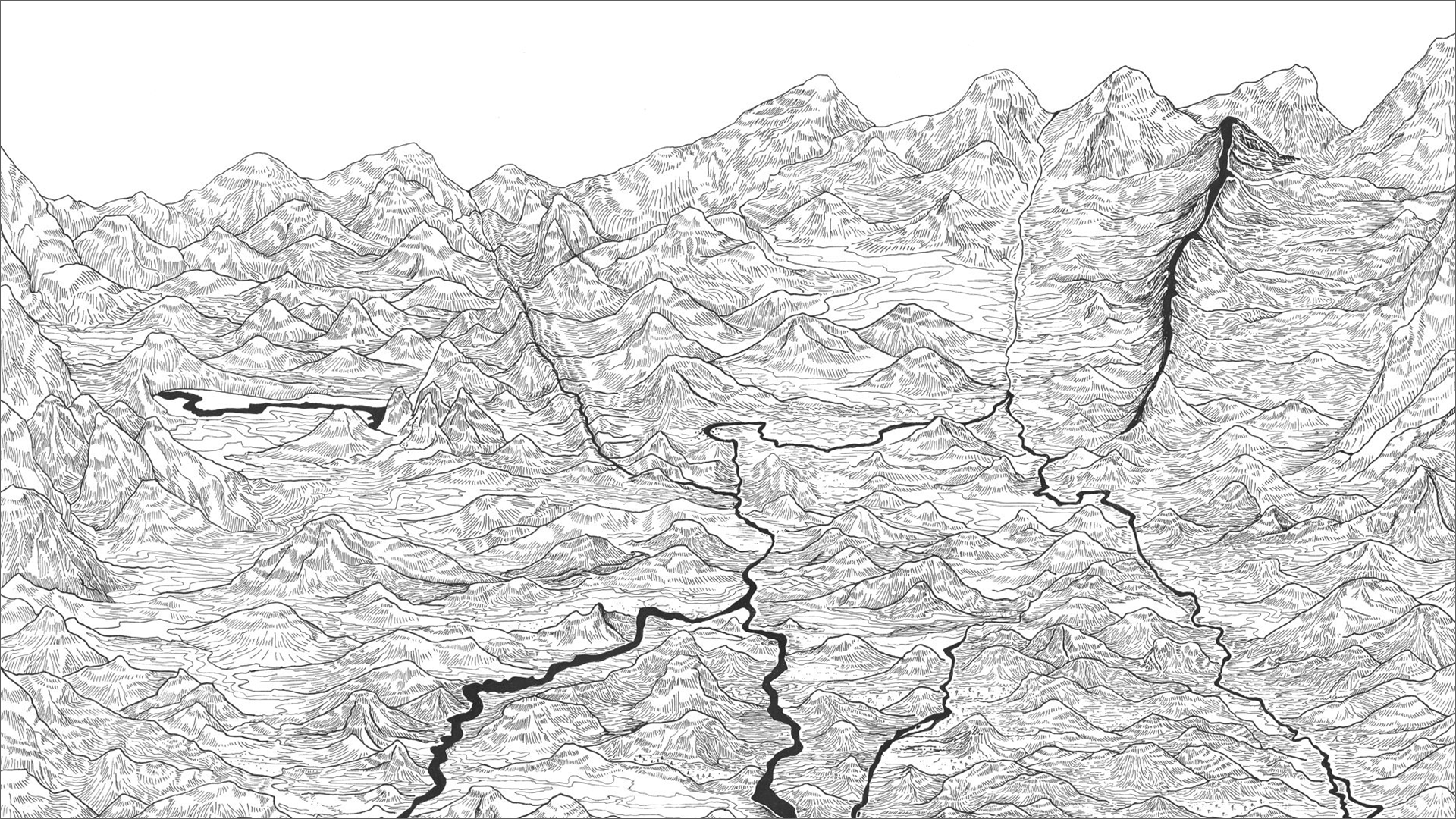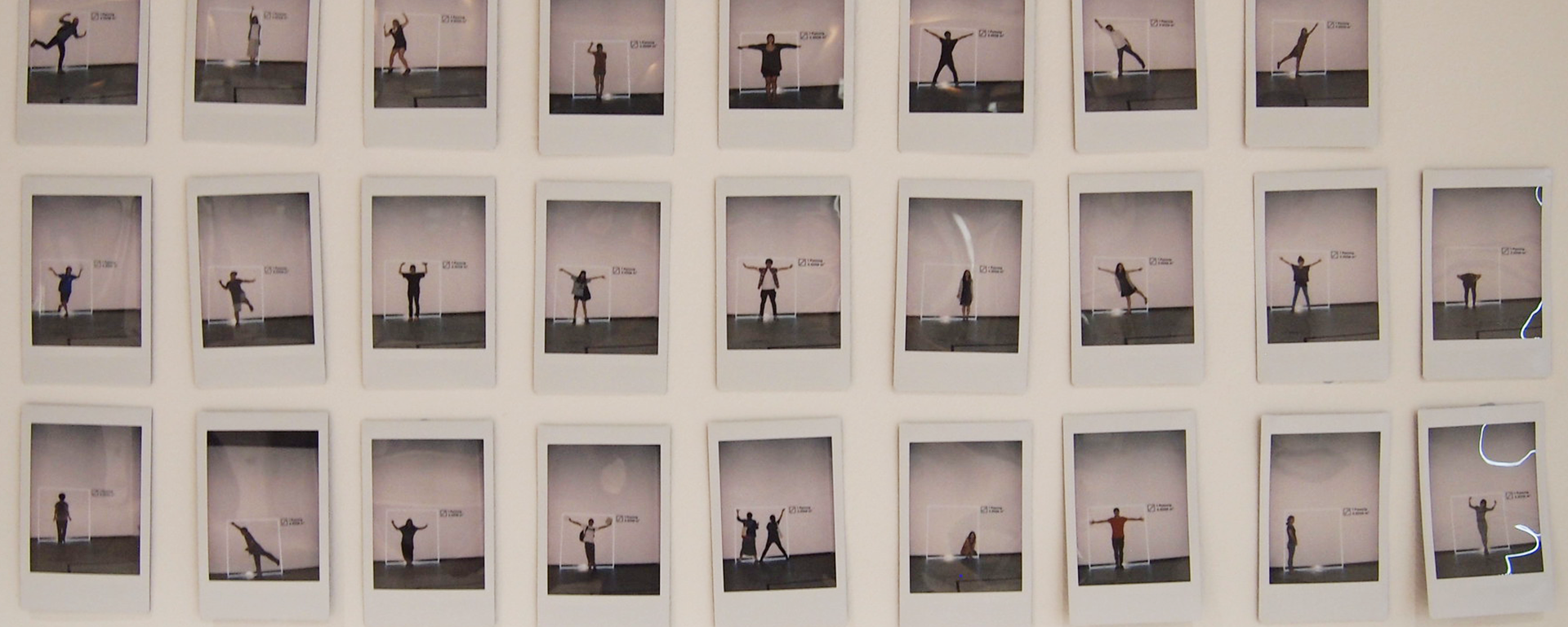
Pyeong 평
Pyeong is an installation that explores standardised, default, typical living space sizes in Singapore and Seoul. It involves a live-sized floor map of a 3 room flat in Singapore and a 24 Pyeong apartment in Seoul which the audience can compare their body scale to.
The very existence of a "default", “common”, or "typical" size and layout of apartments/flats in both Seoul and Singapore shows that there has been an attempt to quantify and define how much private space people should be allocated. But how much space do we need for living? How much space do we want to live in? What is the shape of our spaces? How do we want to shape our living spaces?
한국과 싱가폴에 “보편적인”, 또는 “전형적인”, “디폴트” 넓이와 구조의 아파트가 존재한다는 것은 개인에게 주어지는 면적을 정량화하려는 시도를 보여준다. 그러나 우리가 필요로 하는 주거공간은 어느 정도 크기인가? 우리는 어떤 크기의 공간에 살고싶어하는가? 우리가 사는 공간은 어떤 모양을 하고있는가? 우리는 주거공간을 어떤 형태로 만들고 싶어하는가?
Originally conceived as a comparision between the cities of Singapore and Seoul and as a collaboration between Singaporean artist Debbie Ding and South Korean artist Jeong Hee Woo, Pyeong is an installation that takes a look at the striking visual similarity that can be seen in cities all over asia – its high-rise apartments. A majority of the urban population in asian cities live in almost identical high-rise apartments which, in each respective city, also tend to be constructed to the conventions of “fixed” or “default” sizes and layouts. Flat size is used as an indicator of social status in both cities, and property is commonly seen as stable investment. Many have aspirations to upgrade to a larger space – in the form of a larger high-rise apartment.
In Singapore, over 70% of the population live in Housing Development Board (HDB) Flats which are built by the government, and a large proportion of the remaining 30% also live in high-rise condominiums. Flats come in a fixed sizes of 1 room, 2 room, 3, 4, 5, and EC (Executive Condominium). Each size has a few fixed formats that are typically built at different periods; some common formats names are A, B, S, or New Generation.
In Seoul, we looked at the "pyeong", a unit of area used in Korea to measure the size of houses. Pyeong is similar to the Japanese "tsubo" which is the area of two standard tatami mats. Although the use of the unit was banned in South Korea since 2007 after conversion to metric measurements, it still remains the main reference unit used by people in South Korea when talking about flat sizes.
Most people can describe houses in terms of pyeong, but many do not know specifically what one pyeong looks like, as one is more accustomed to thinking of it in terms of pyeongs in multiples (eg: 24 pyeong house). A pyeong is anecdotally said to be the size of an average man with his arms and legs stretched out, so we made a "pyeongcube" in which people could stand inside and be photographed/documented standing inside. We created a wall of polaroids of visitors and their size in relation to the one pyeong square on the wall.
The very existence of a “default”, “common”, or “typical” size and layout of apartments/flats in both Seoul and Singapore shows that there has been an attempt to quantify and define how much private space people should be allocated. But how much space do we need for living? How much space do we want to live in? What is the shape of our spaces? How do we want to shape our living spaces?
2012
Installation
Seoul Art_Space Mullae
Produced as part of the The Substation - Seoul Art_Space Mullae Artist Exchange. A Collaboration with Jeong Heewoo.
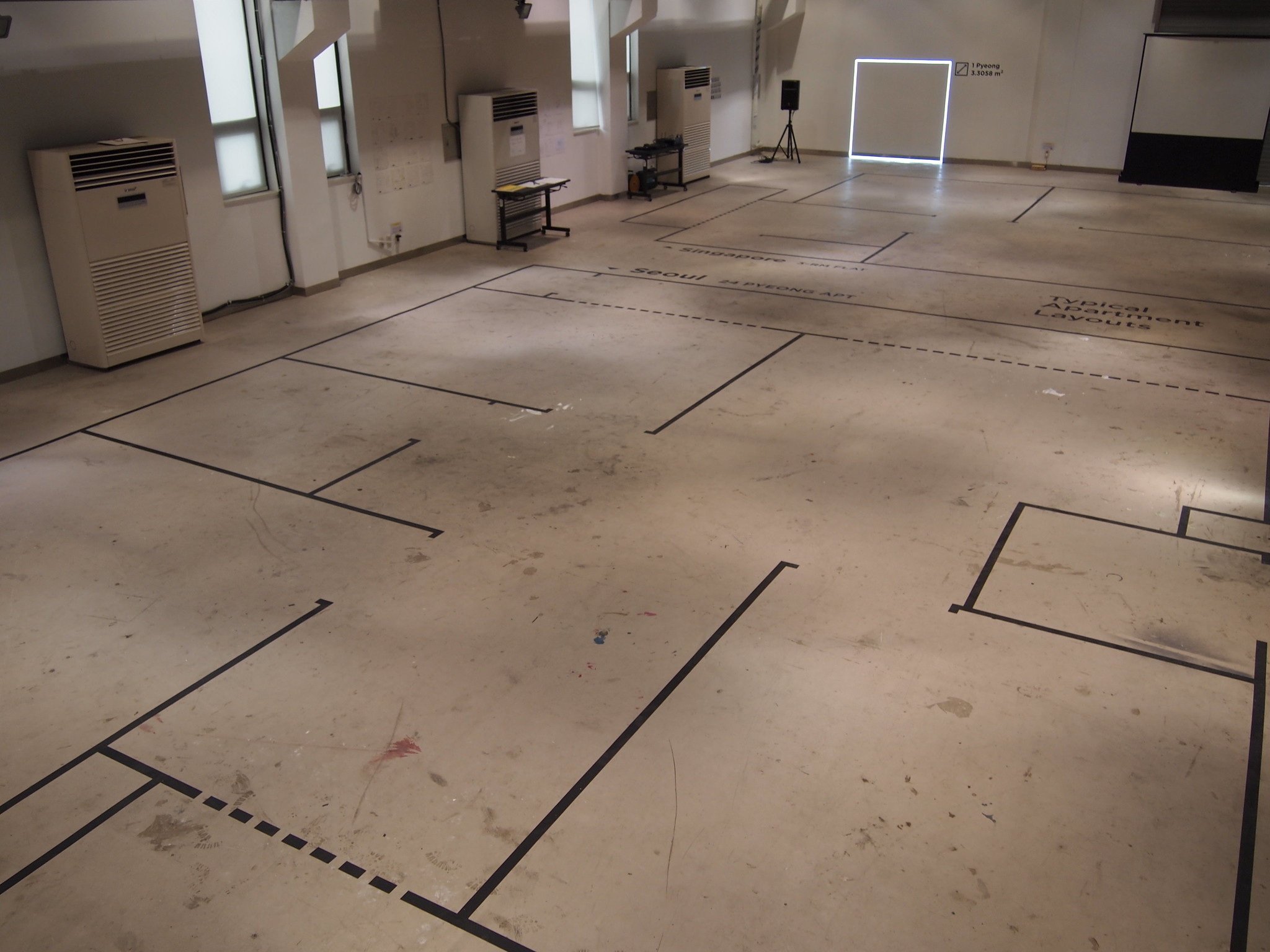
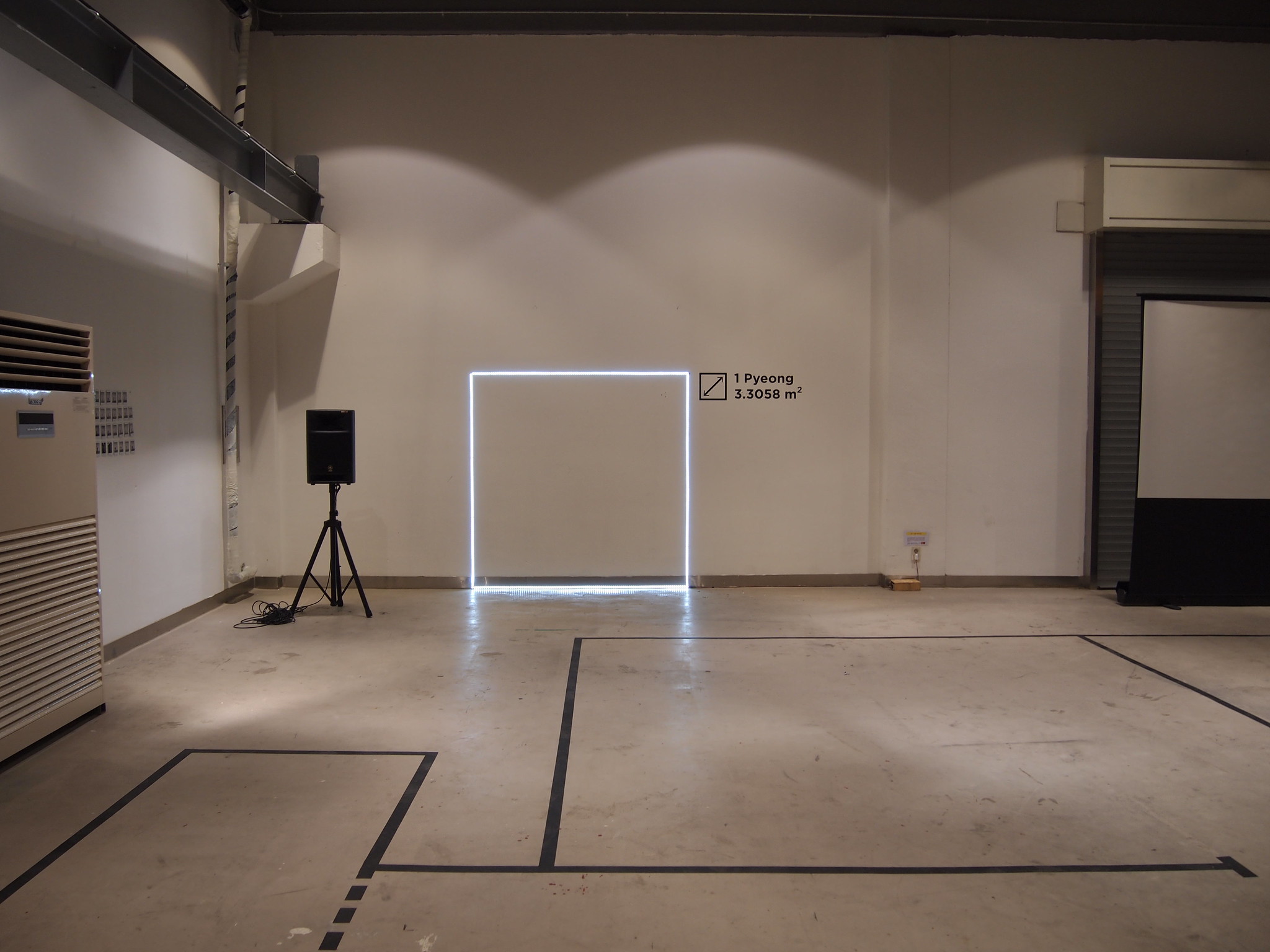
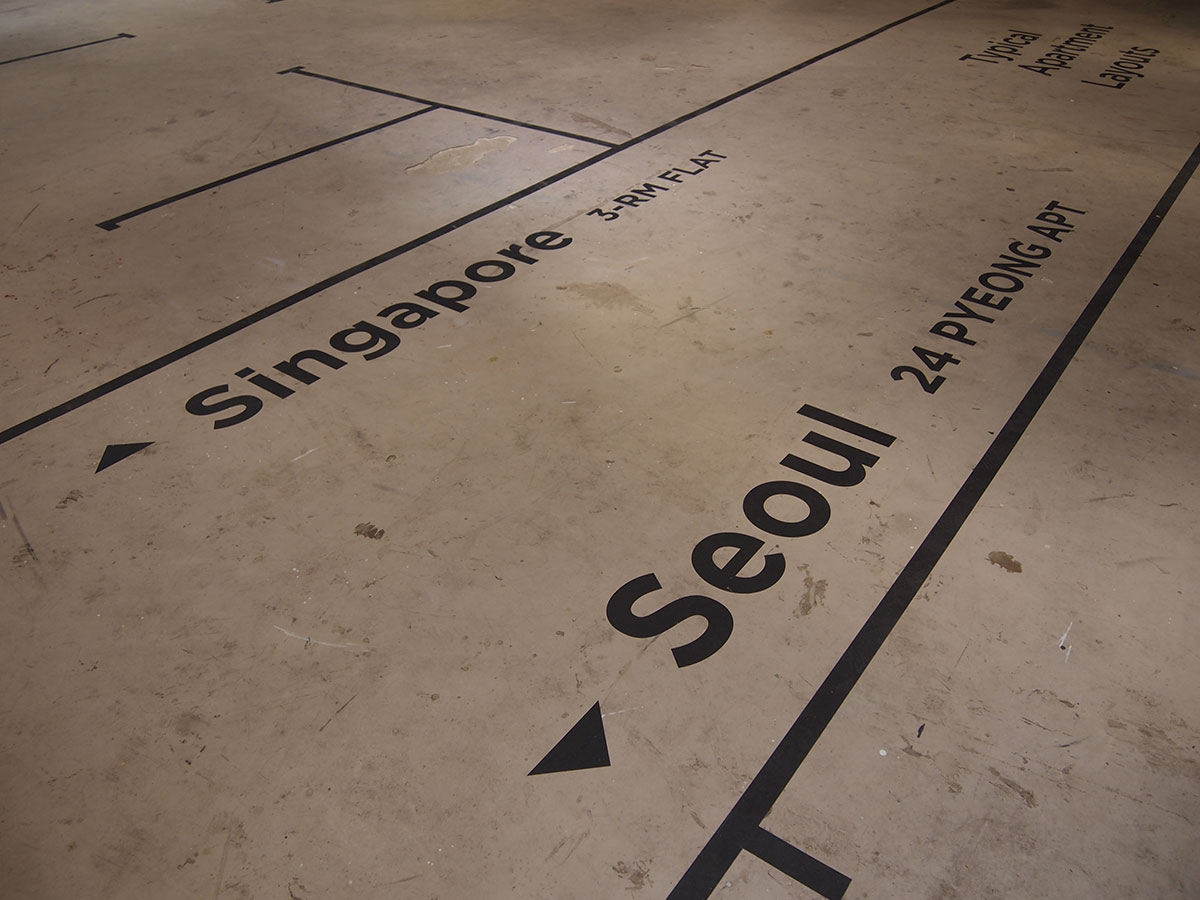
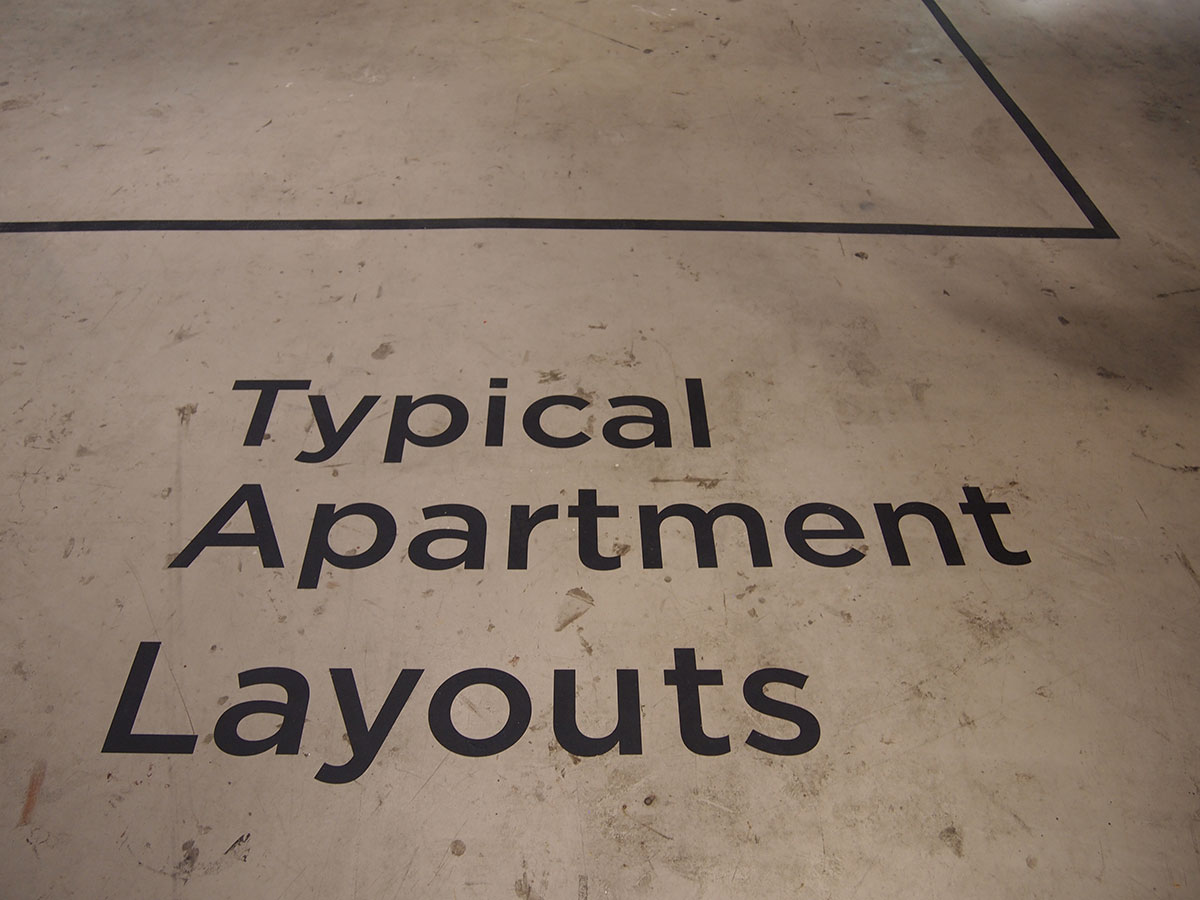
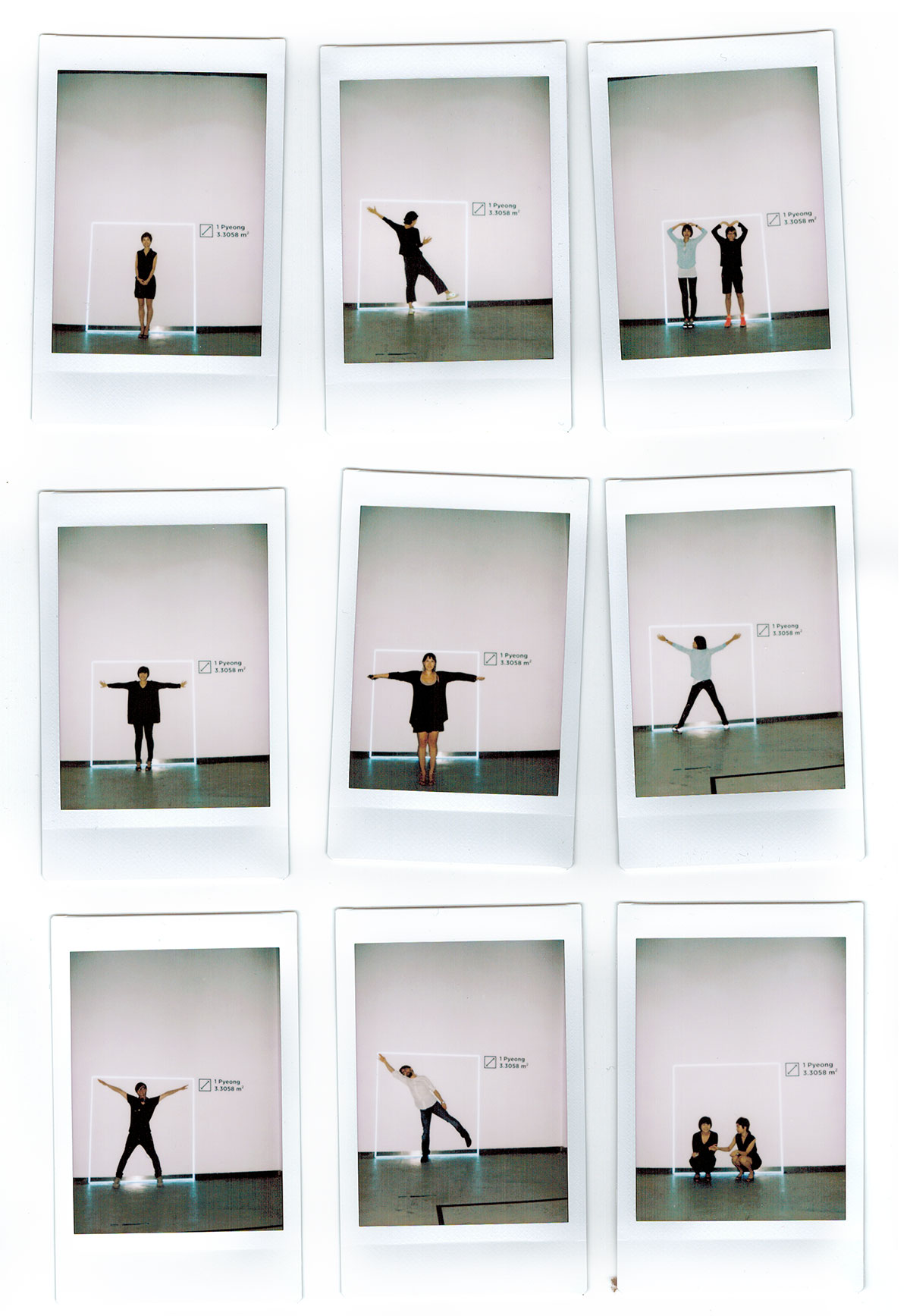
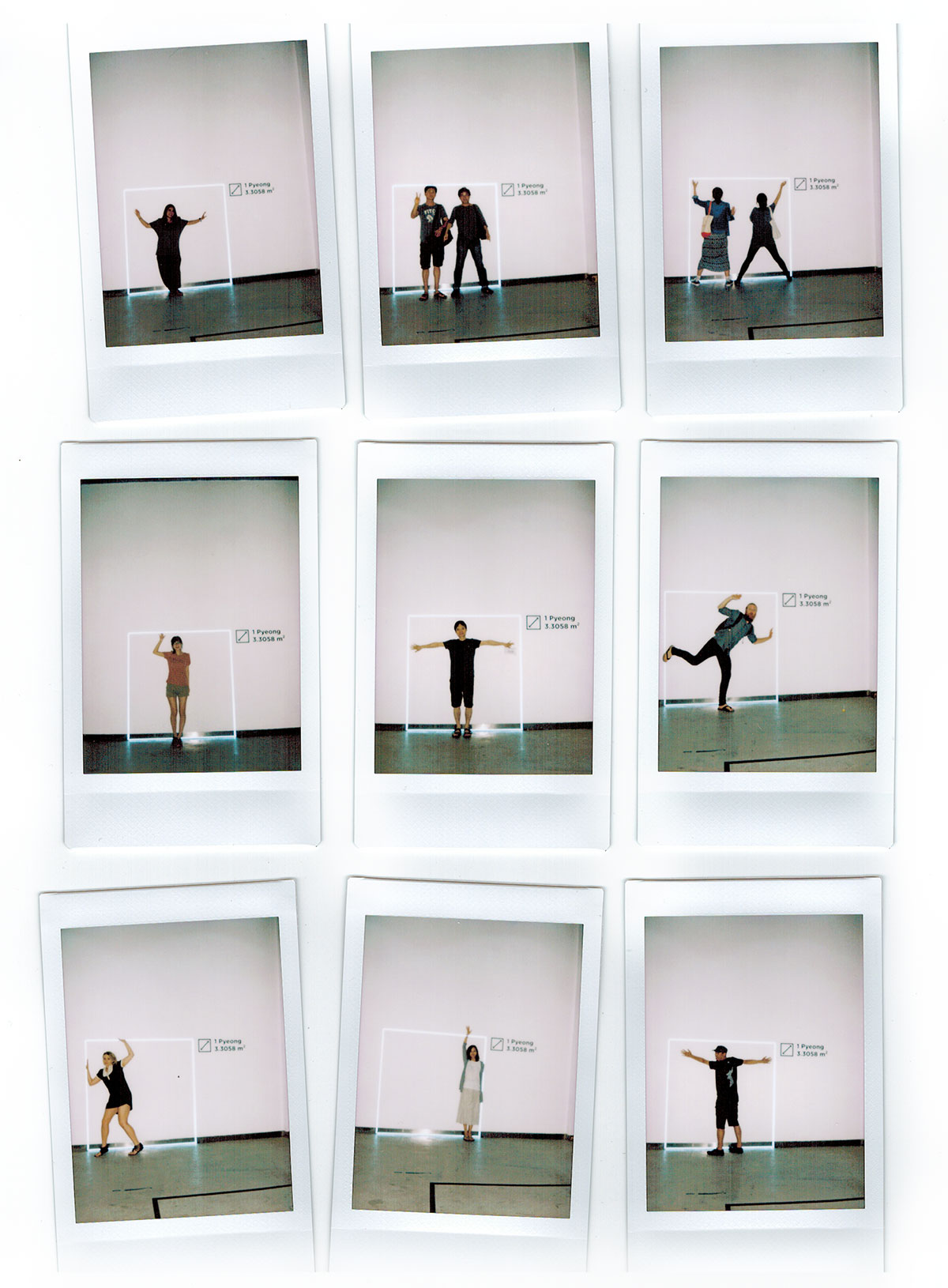
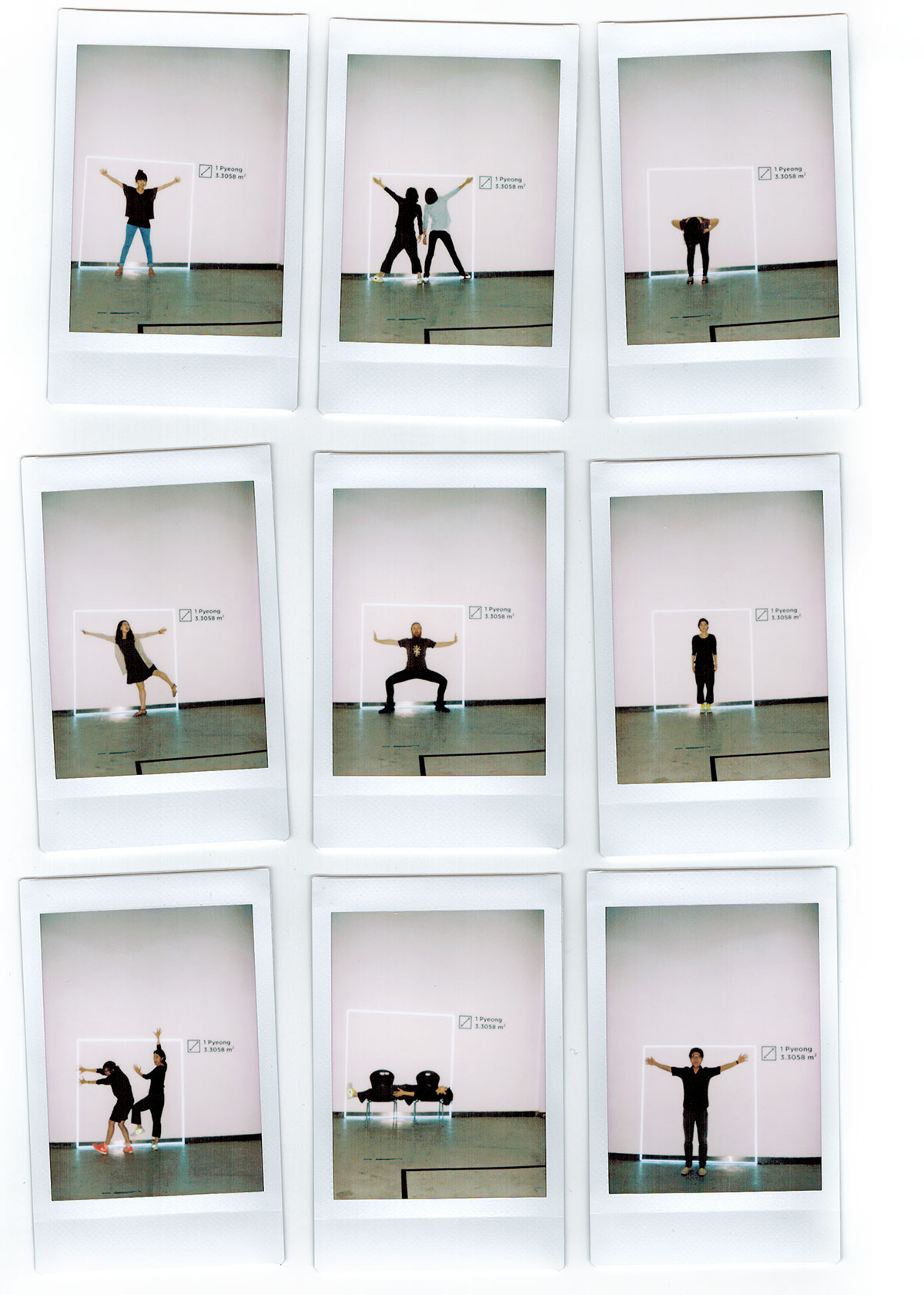
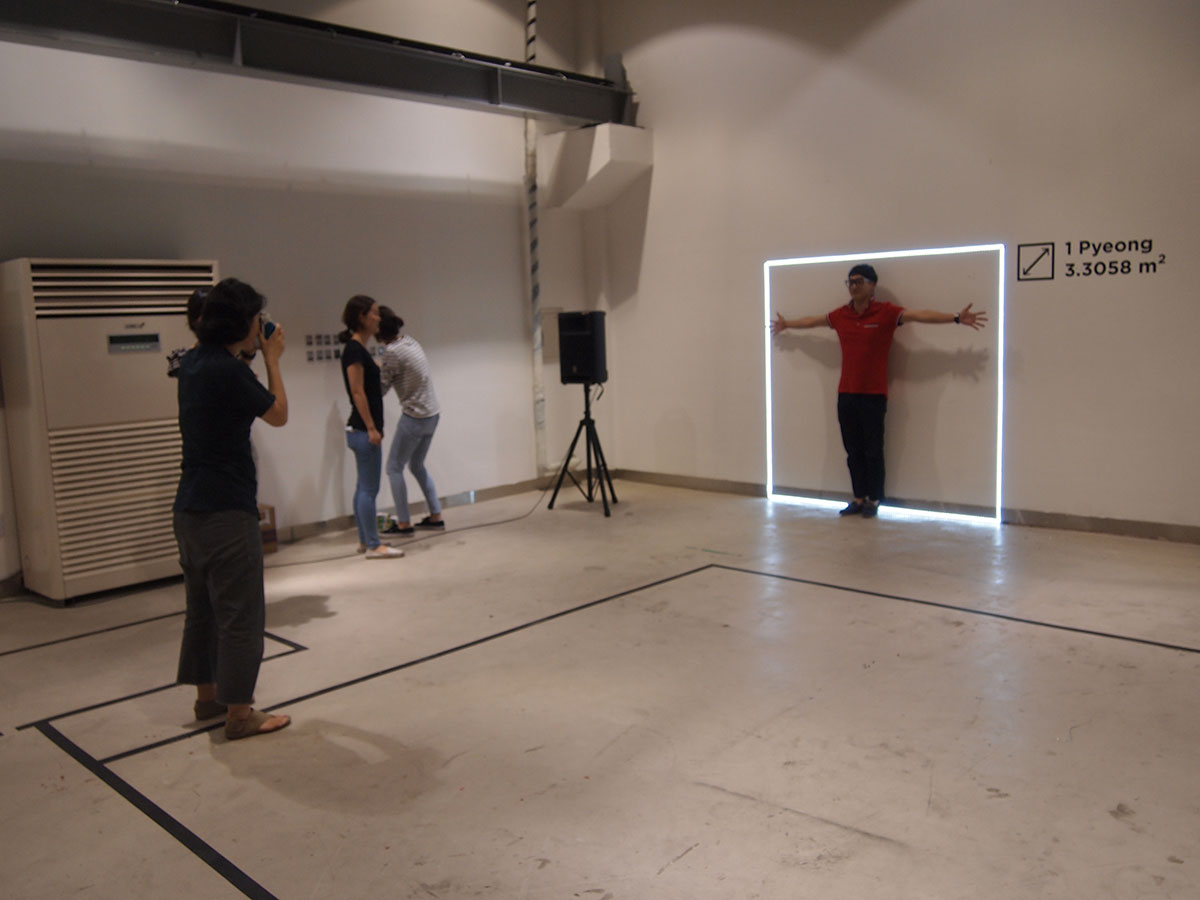
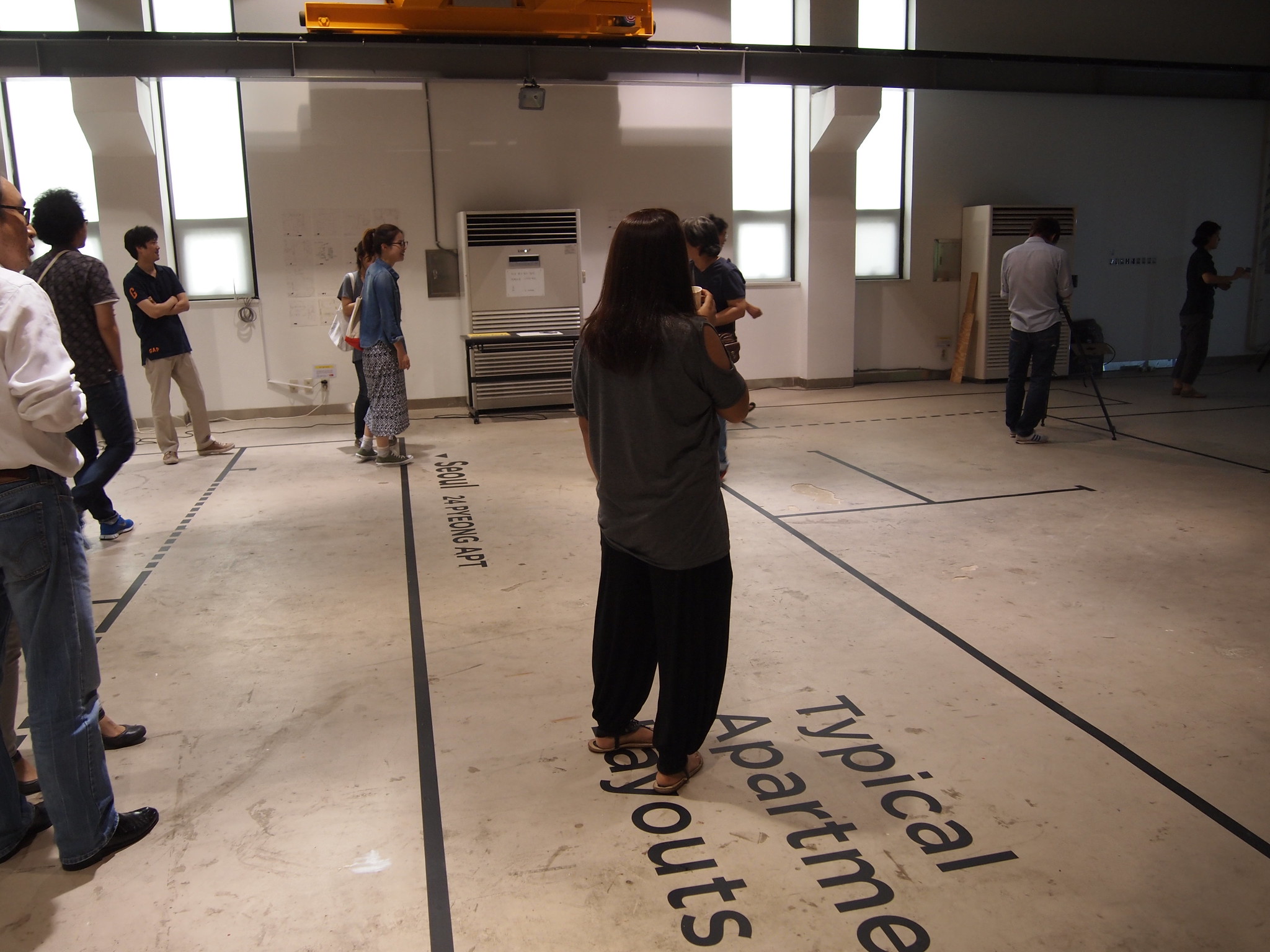
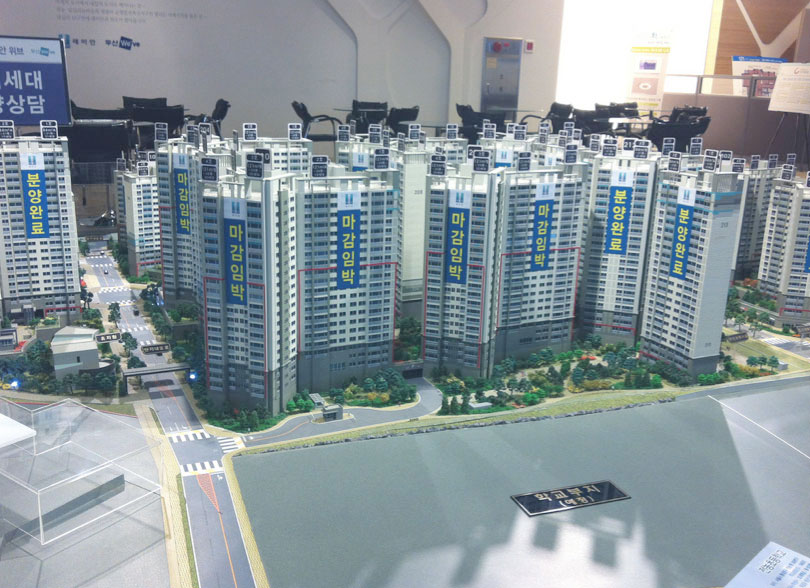
We visited traditional korean houses, modern apartments, and showflats to get a feel of apartments in Seoul.
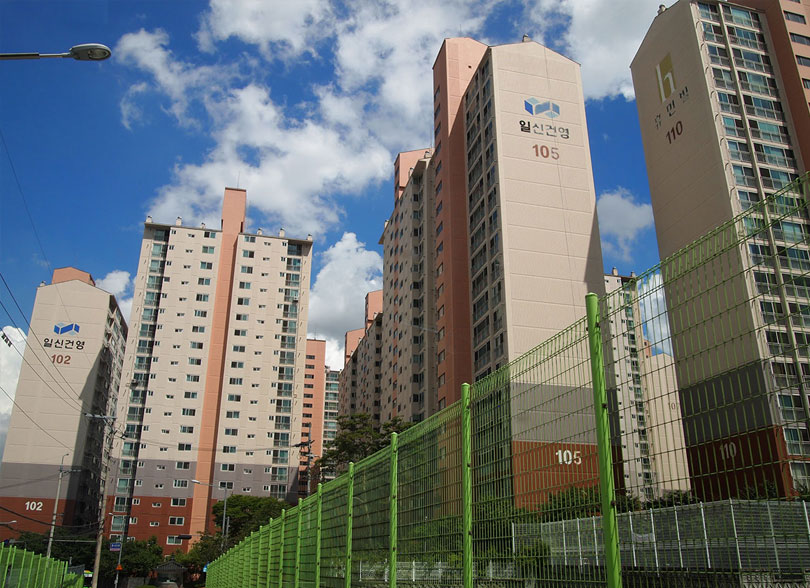
We were intrigued by the standardised formats for high rise flats in Singapore and Seoul.
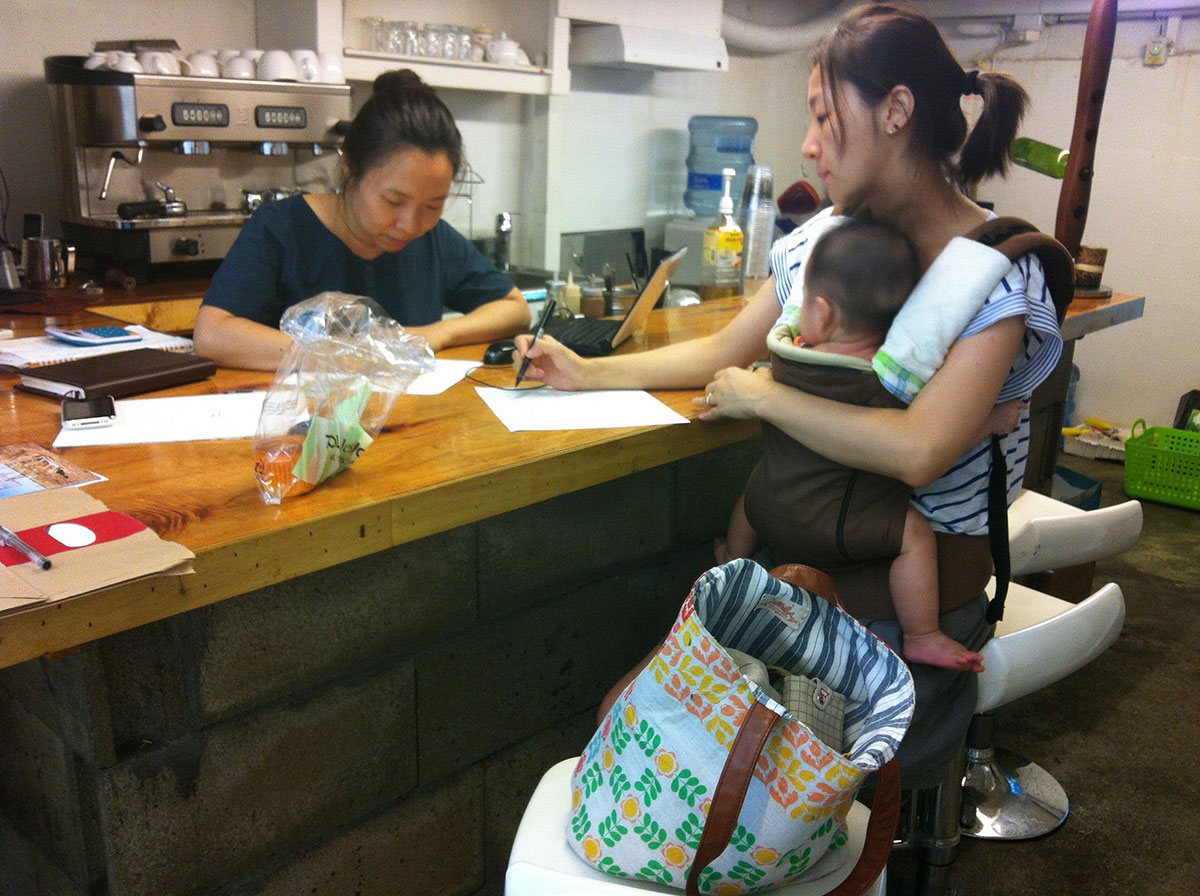
We conducted a survey of people and what they thought their flats looked like on the inside.
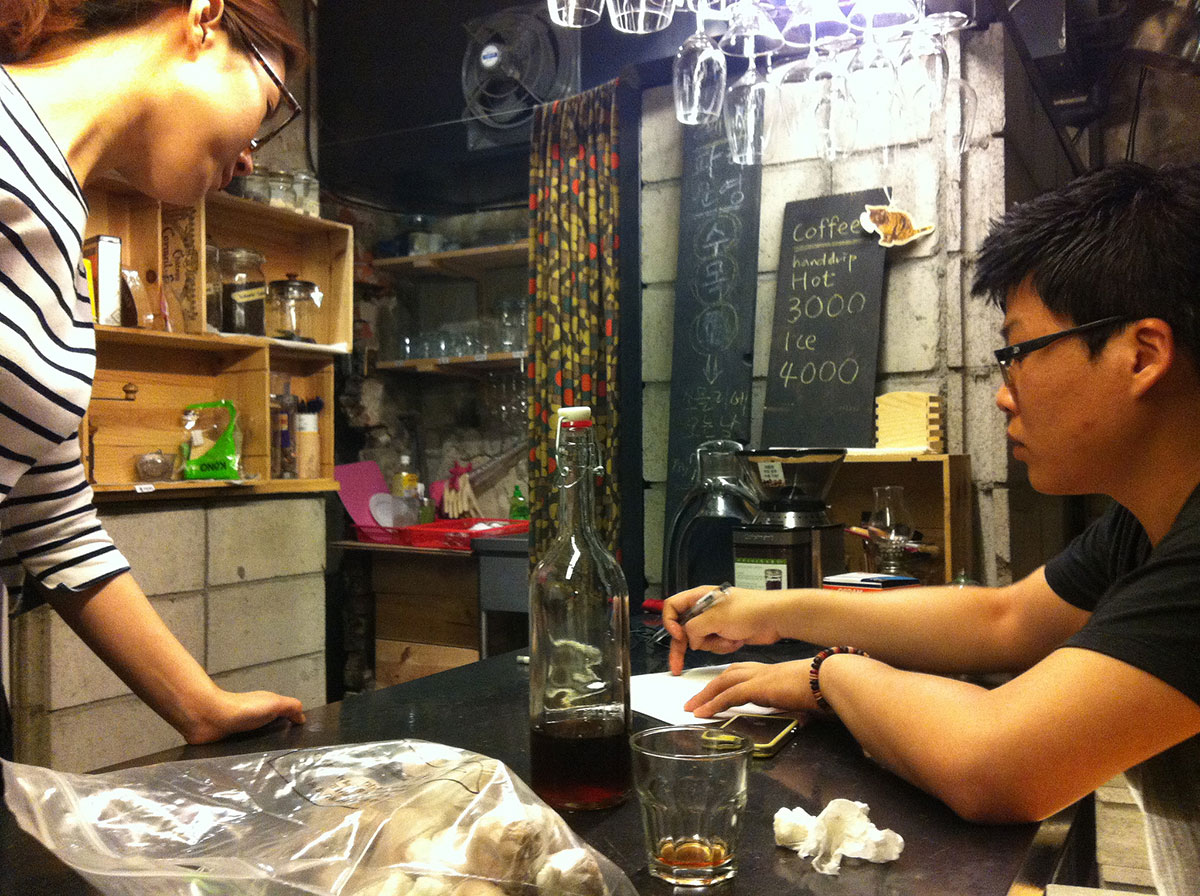
We asked respondents from Seoul and Singapore to respond by drawing maps of their interior spaces from memory.
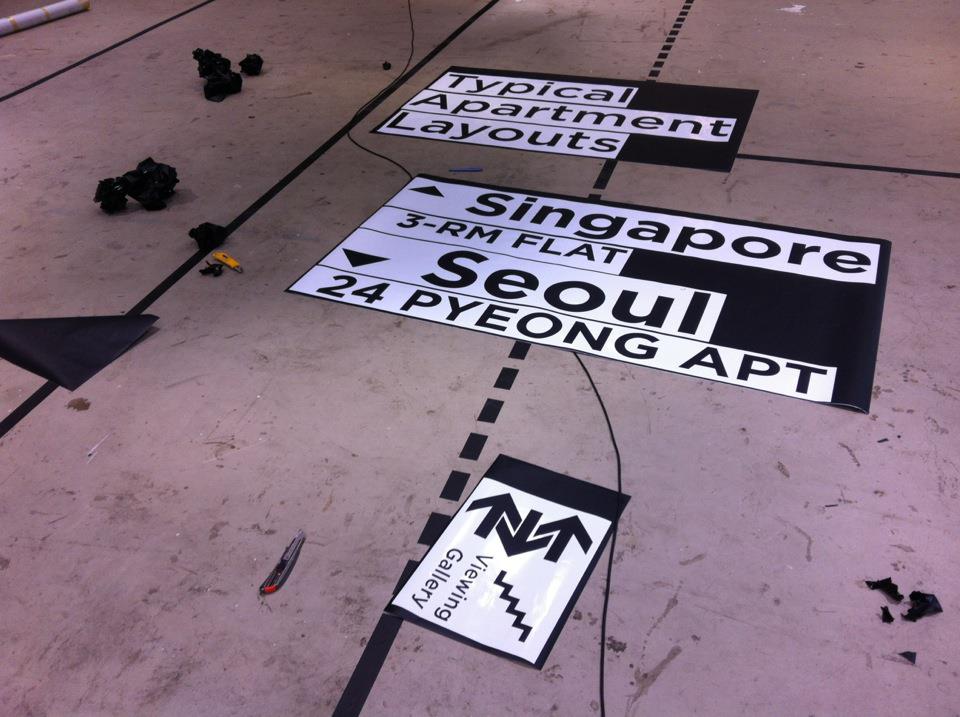
After that, we made a life-sized outline drawing of what would be a typical 3-room flat in singapore, next to a typical 24-pyeong flat in Seoul.
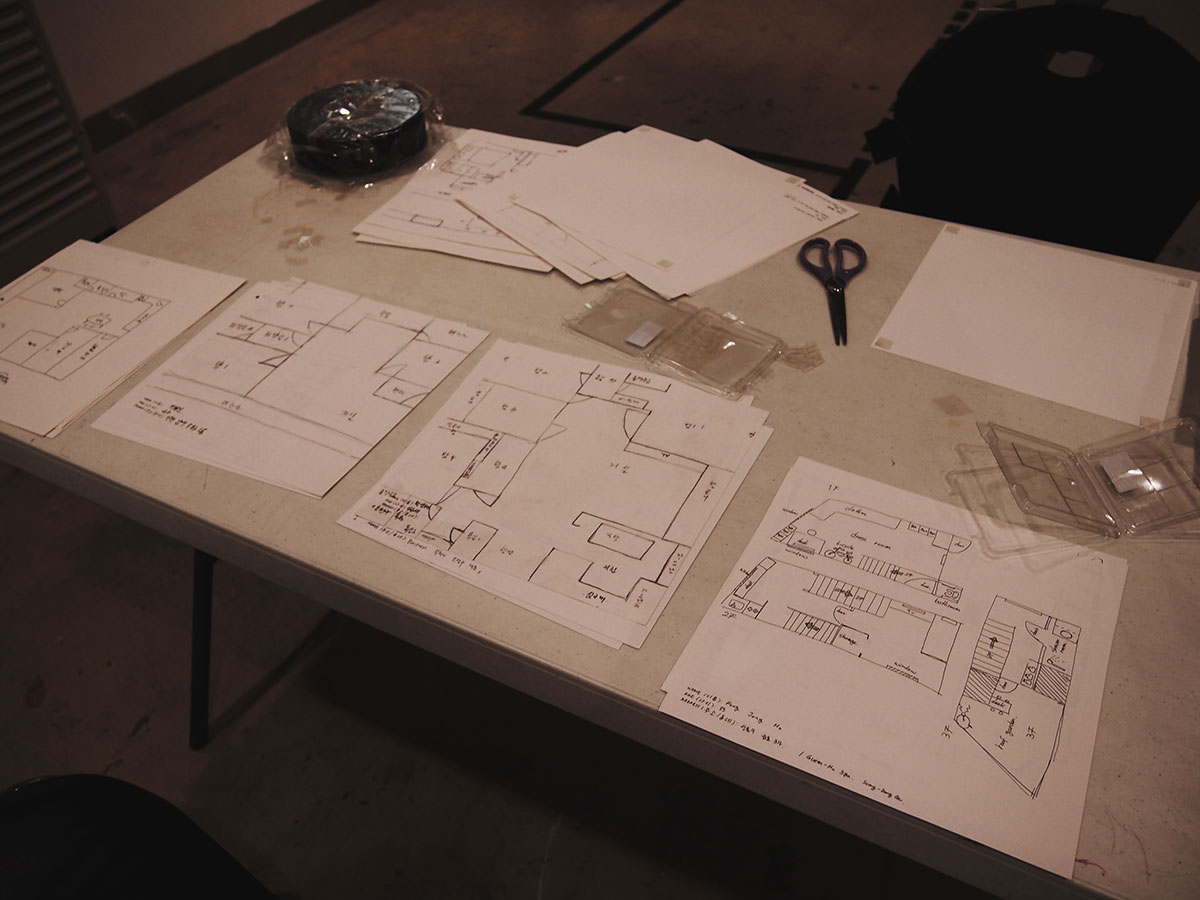
The collected maps contributed by both respondents from Singapore and Seoul.
